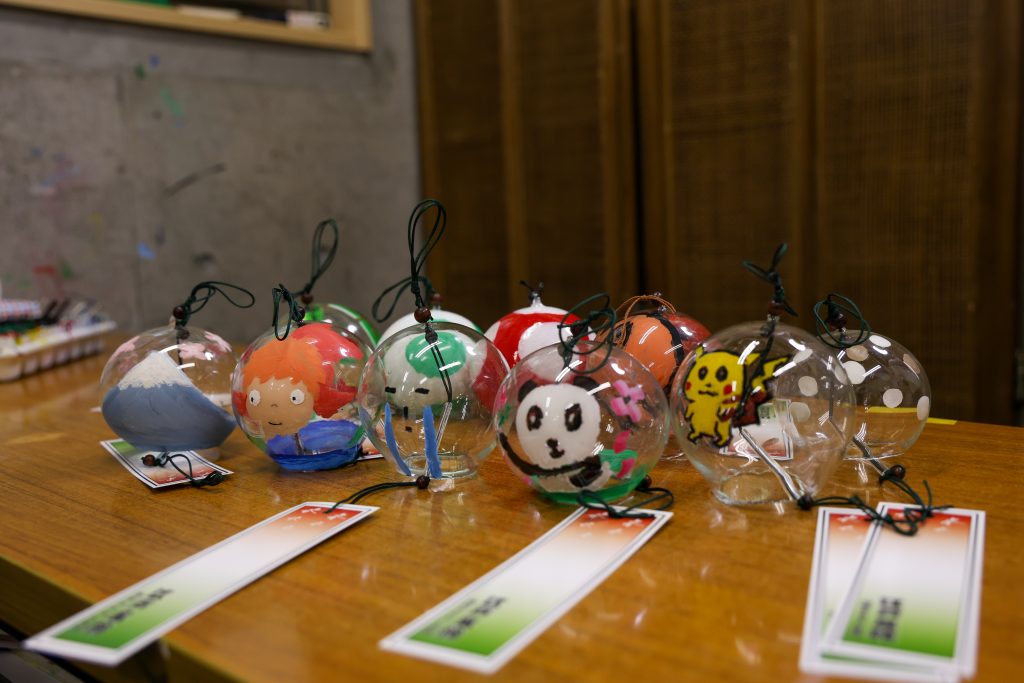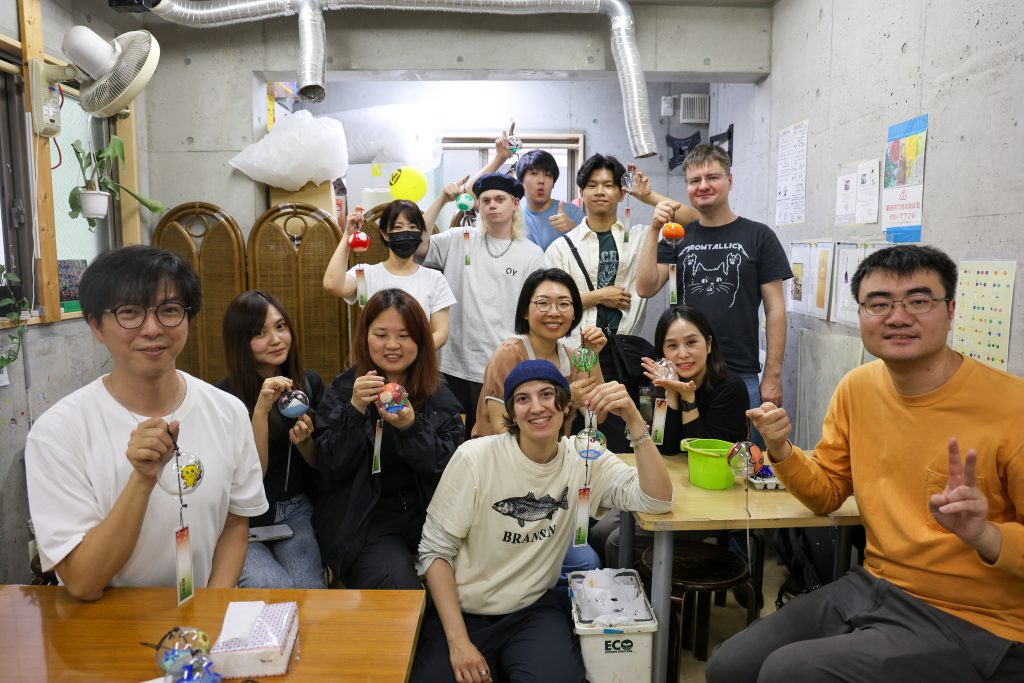
On June 13, as part of their cultural experience, students from the Tourism Business class had the opportunity to take part in a traditional furin 風鈴 (Japanese wind chime) workshop at Shinohara Maruyoshi Furin Workshop (篠原まるよし風鈴). They could choose between two activities: glass blowing, where they made their furin from scratch, and/or furin painting.
What is a furin (風鈴)?
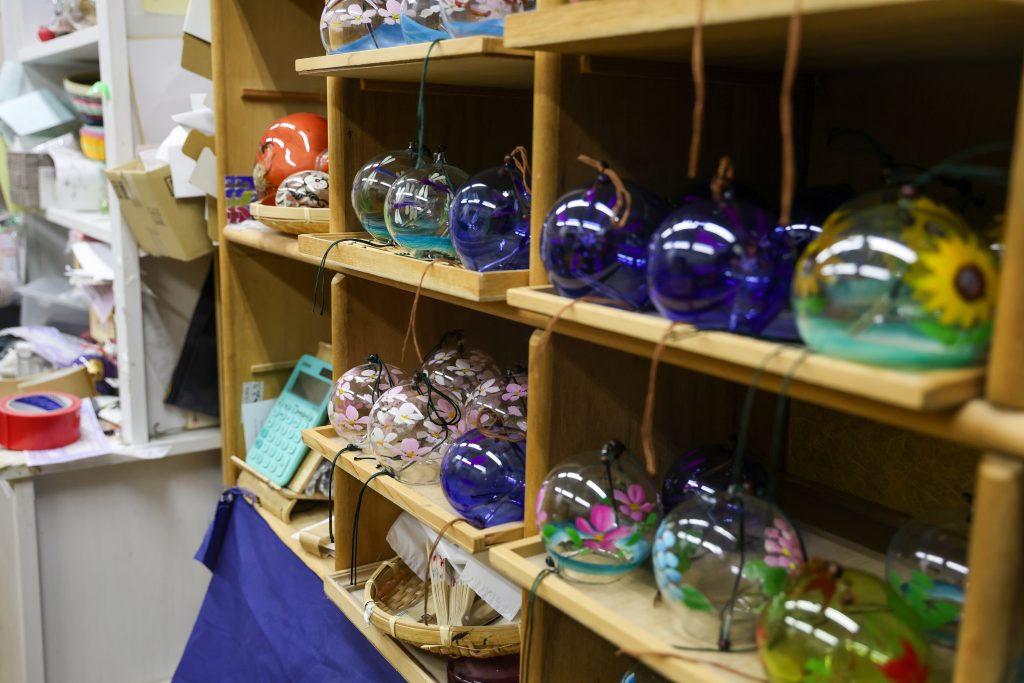
The furin (風鈴) is a traditional Japanese wind chime, typically made of blown glass, metal, or ceramic. It is usually hung by windows, doors, or on verandas during the summer, and produces a delicate sound when stirred by the breeze. Each furin has its own unique tone. This gentle tinkling is especially appreciated in Japan as it evokes a sense of coolness and helps create a soothing atmosphere during the hot summer months. Beyond its sound, the furin is often decorated with colorful patterns that carry symbolic meanings—such as bringing good luck, warding off evil spirits, or celebrating nature. As such, it is both a beautiful decorative object and a cultural symbol rich in tradition.
How to Make a Furin?
🔥 Glass Blowing
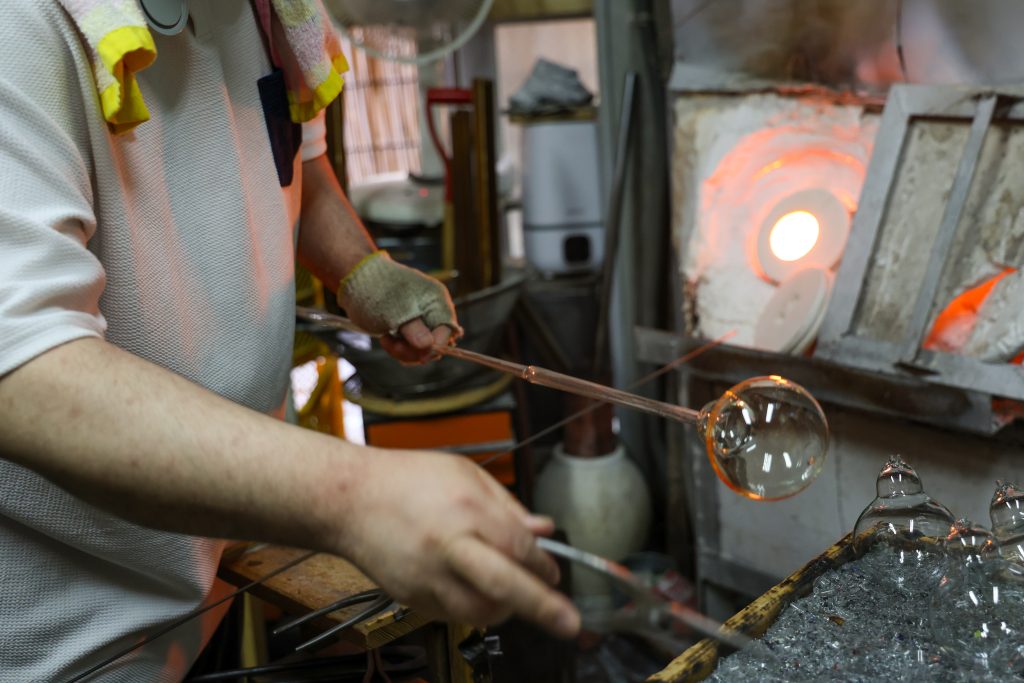
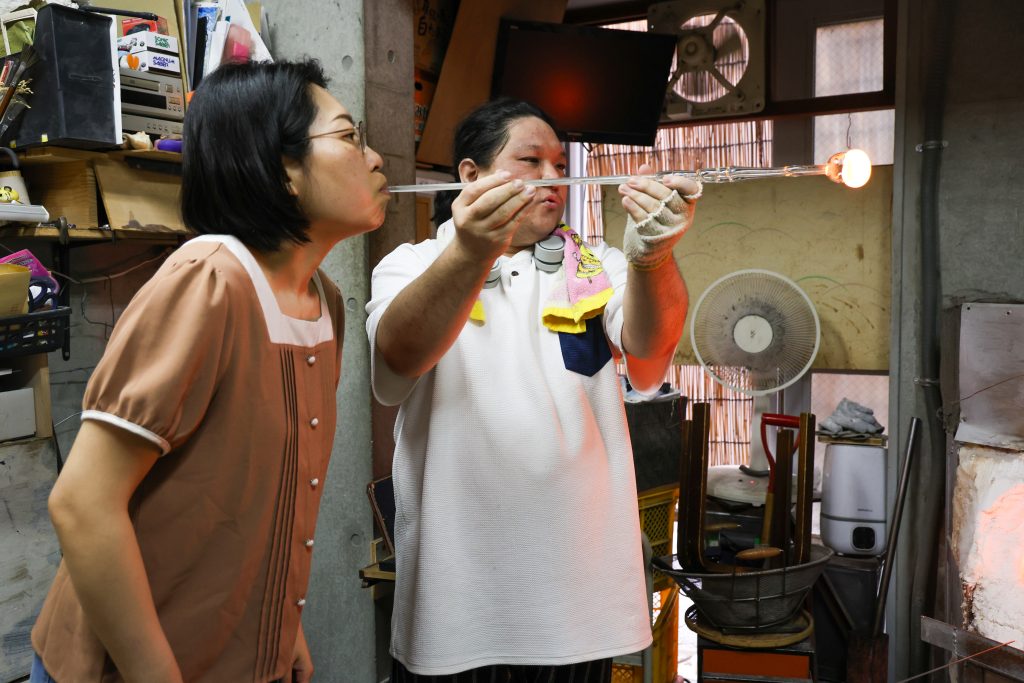
Making the glass for the furin was a physically demanding task. The heat near the furnace was intense, and it required precise breath control. If the student didn’t blow enough, the glass wouldn’t expand properly. If they blew too hard, the glass could fall off the pipe and shatter. Each piece required several rounds of blowing, turning, and reheating in the furnace to be shaped correctly.
It was a real challenge—several students broke their first attempts before successfully shaping their furin.
🎨 Furin Painting
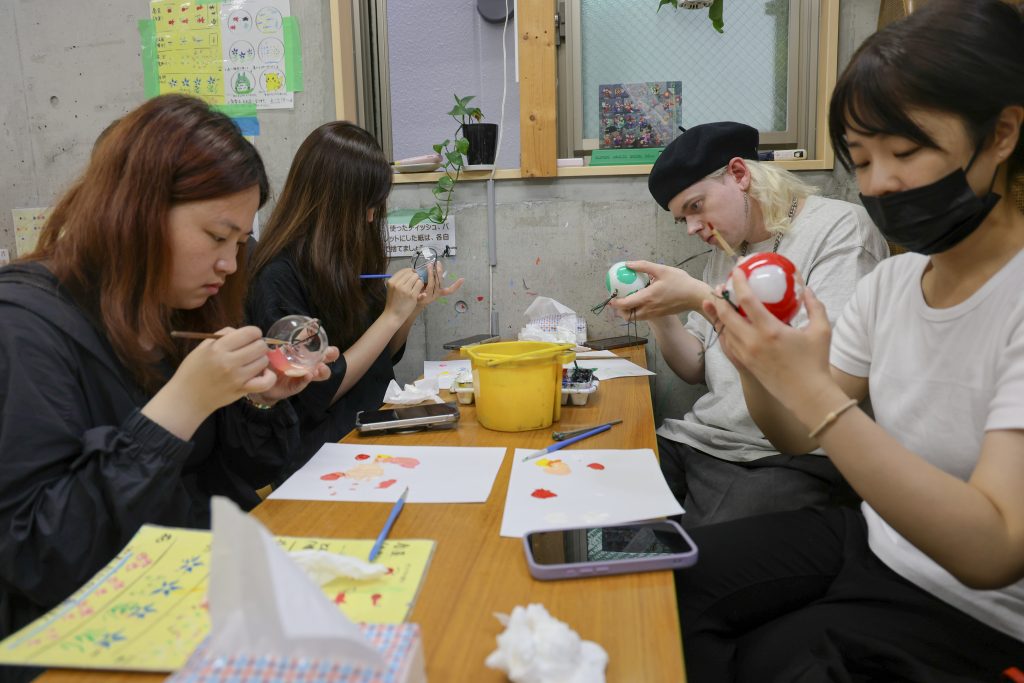
Students were first introduced to traditional furin patterns and their meanings:
- Goldfish (金魚) for attracting wealth,
- Fireworks (花火) to symbolize joy and celebration,
- Flowers (花) for poetic beauty and seasonal references,
- Dragonflies (蜻蛉) to ward off evil spirits, and more.
They also received guidance from the workshop staff on painting techniques. Impressively, this local shop makes over 100 furin per day, which truly amazed the students.
When painting a furin, the most common method is to paint on the inside of the glass. This traditional approach helps protect the design from fading or rubbing off. However, students could also try painting on the outside only, which is easier but less durable. Another option was to first sketch the pattern on the outside as a guide, then paint the final version inside—removing the outside layer afterward if desired. If any mistakes were made, the paint could easily be wiped off with a cloth before drying, making it beginner-friendly.
Today, furin designs are not limited to tradition. Students were encouraged to express their creativity by either choosing a classic motif or creating their own. The results were wonderfully diverse: some painted pandas, pigs, Mount Fuji surrounded by cherry blossoms, or even popular characters from Studio Ghibli and Mario. Others preferred more traditional elements, such as ocean waves or bamboo. The final collection showcased a wide variety of unique and expressive furin designs.
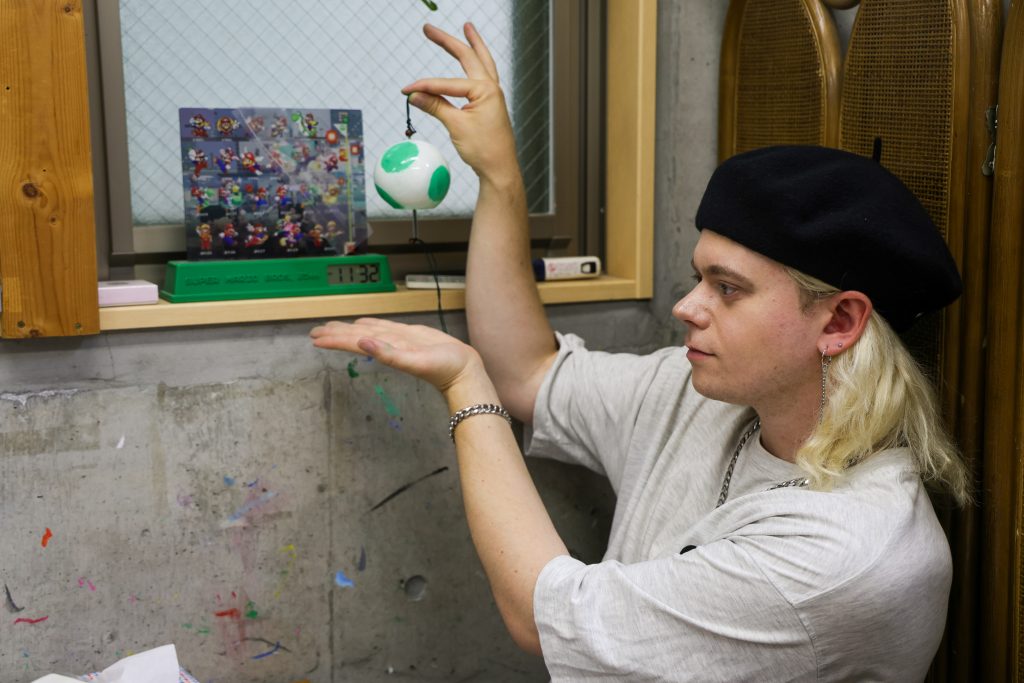
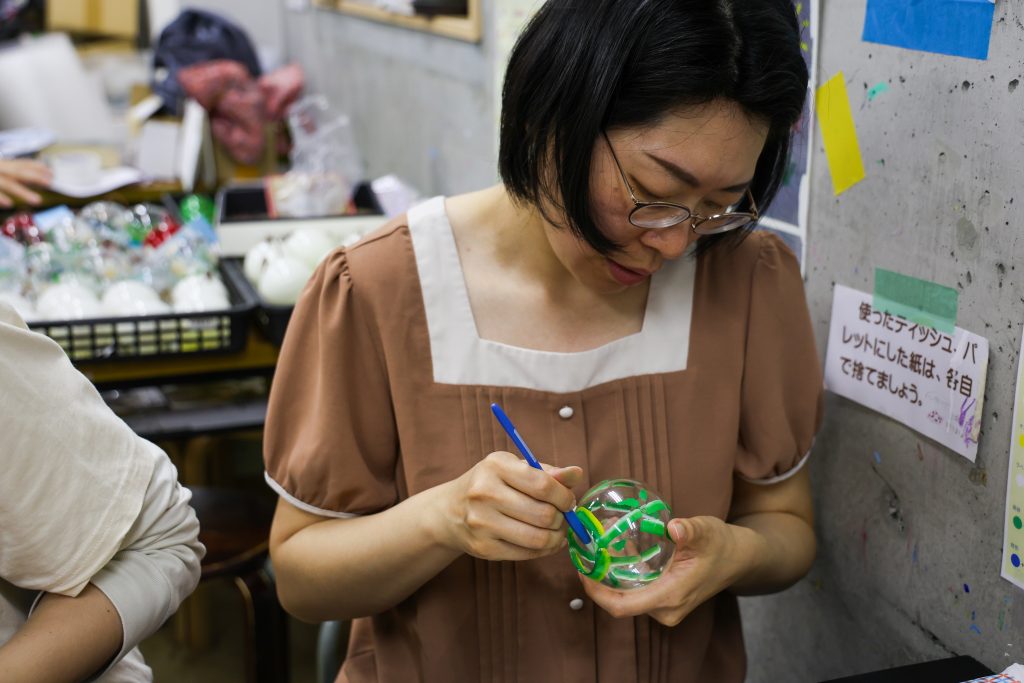
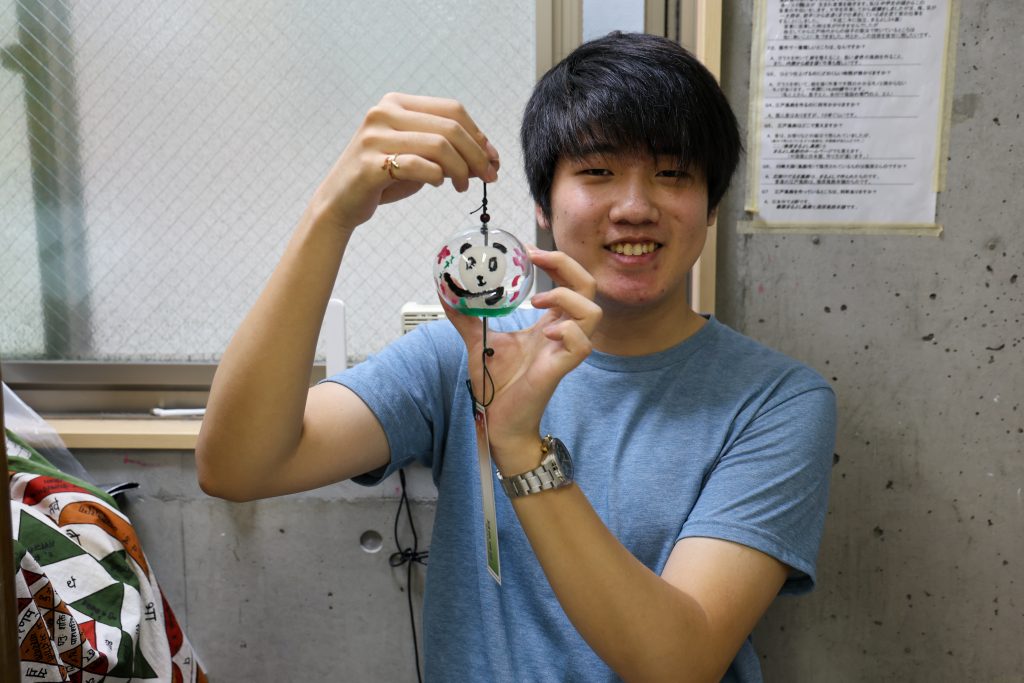
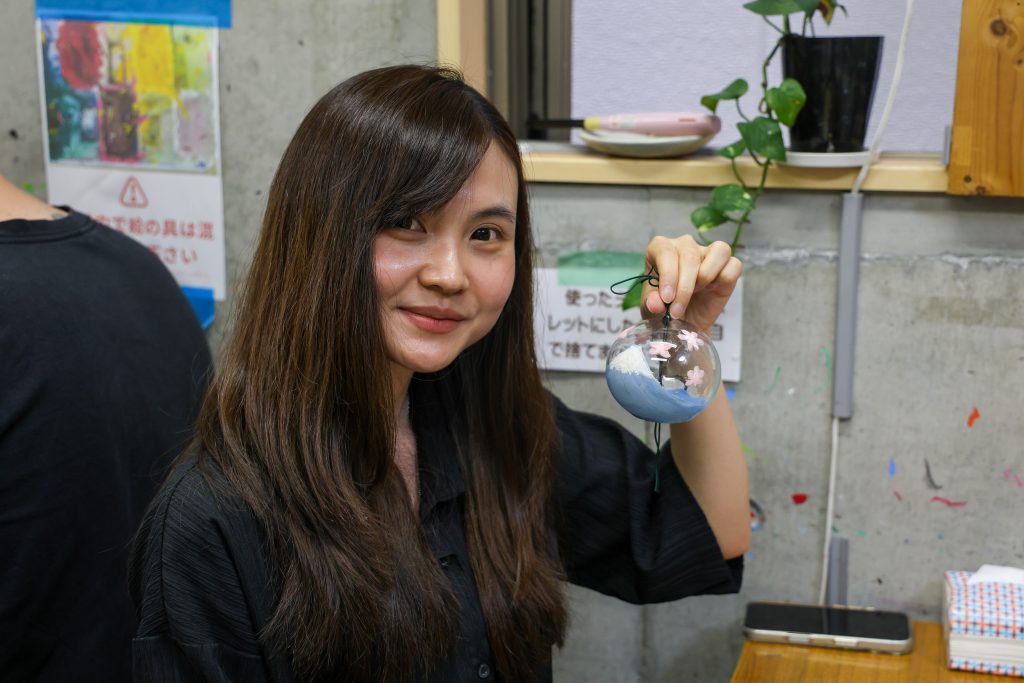
Students impressions
Lele (Netherlands)
As part of a field trip, we went to Okachimachi to make furin (wind chimes). The Tourism Business class always goes on fun and educational visits. Especially in places like Okachimachi, which is one of Tokyo’s interesting sightseeing spots.
Half of the class tried glassblowing and painting, while the other half only did painting. I did both. I failed four times while blowing the glass, but the craftsman kindly helped me. In the end, I was able to make a nice furin.
While other classmates were glassblowing, I asked the craftsman a few questions. He told me they make as many as 180 pieces a day, which I thought was amazing. Painting was also difficult, because we had to paint inside the furin.
I worked really hard, and finally my furin turned out beautifully. It was a very fun experience!
Slava (Russia)
It was a very traditional place. I hadn’t painted in a long time, so painting freely inside the glass ball felt nostalgic.
Of course, the furin you buy at a store looks more beautiful than the one I painted myself, but creating something entirely from scratch—blowing the glass and painting it—felt really good.
If I have the chance, I’d love to go again with friends. I never imagined there would be such a quiet, traditional cultural space preserved in the middle of busy Tokyo.
Miyabi (Taiwan)
I was very impressed by the skills of the craftspeople. I heard it takes ten years to master glassblowing.
The workshop was very hot, and they said it gets even more intense in summer. I was amazed that they’re able to make over 100 furin a day.
By experiencing the glassblowing myself, I came to really appreciate their level of craftsmanship. It takes delicate adjustments to shape the glass beautifully.
Painting the furin also requires skill. Since we have to paint on the inside, it was hard for someone like me who isn’t very good with their hands.
But seeing everyone’s work was really soothing. Each furin is carefully made, so the shape and size are all different. Even the sound is unique. I’m really glad I got to experience making such one-of-a-kind furin.
Now I’ve put mine up at home. I think it will bring a lovely atmosphere to this summer.
